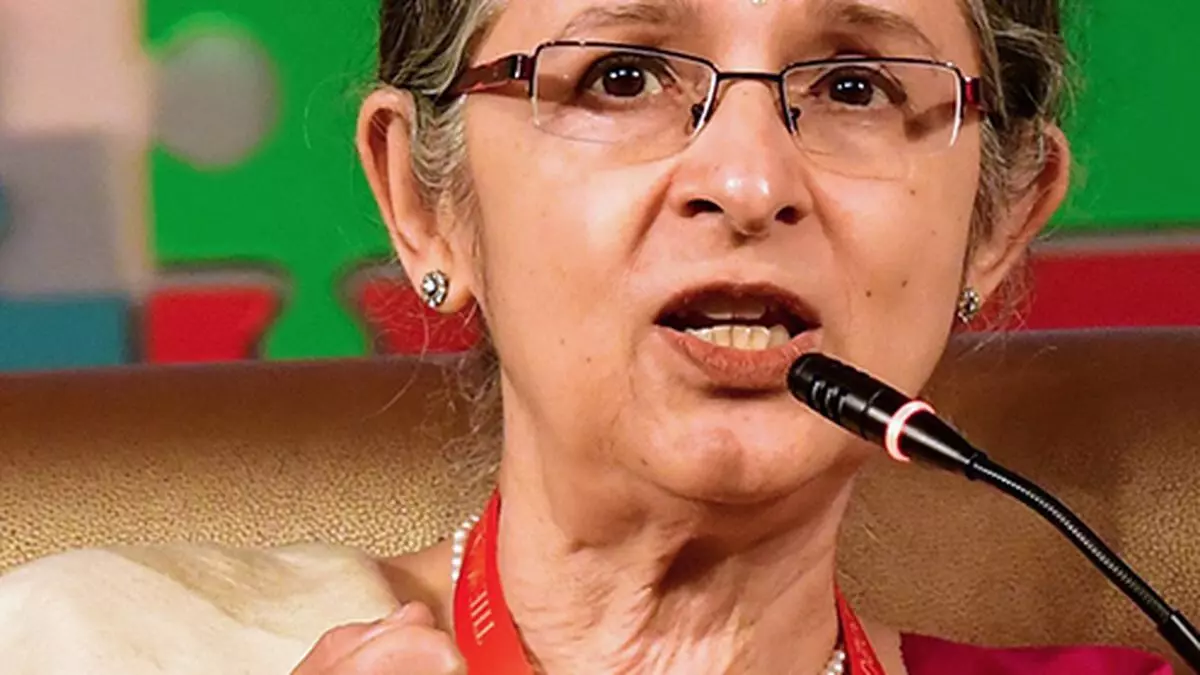MPC Minutes: Not cutting rate would impact growth, say Varma and Goyal
Monetary Policy Committee (MPC) members Ashima Goyal and Jayant Varma proffered solid arguments for a 25 basis point repo rate cut at the committee’s last meeting, as they felt that not doing so would impact growth.
At the MPC meeting, which was held from June 5–7, 2024, a majority of 4 to 2 voted to maintain the policy repo rate at 6.50 per cent.
Goyal, Emeritus Professor, Indira Gandhi Institute of Development Research (IGIDR), Mumbai, and Varma, Professor, Indian Institute of Management, Ahmedabad, voted for a cut in the repo rate from 6.50 per cent to 6.25 per cent.
Jayant Varma
| Photo Credit: RAVI MISTRY
The resolution “to remain focused on the withdrawal of accommodation to ensure that inflation progressively aligns with the target while supporting growth” was also decided by a majority of 4 to 2. Goyal and Varma voted for a change in stance to neutral.
While Varma was the only member to bat for a rate cut in the last three MPC meetings (February 2024, April 2024, and June 2024), now Goyal voted with him in the June meeting.
- Also read: RBI to rationalise the number of agenda items bank management places before its board: Guv Das
Real policy rates can safely fall
The IGIDR professor said the headline inflation projection of 4.5 per cent for FY25 gives an average real repo rate of 2 per cent, implying that this rate will be above neutral for too long if the repo rate stays unchanged (at 6.50 per cent).
She cautioned that, “Falling inflation has raised real repo above unity. This will reduce real growth rate with a lag. Expected growth is around 7 per cent in FY25 below the 8 per cent achieved in FY24.
“Status quoism is praised as being cautious. But if doing nothing distorts real variables, it aggravates shocks instead of smoothing them and raises risk.”
Goyal observed that if headline inflation is approaching the target and core inflation is below target, and incoming data supports this, it implies growth is below potential and NIR (neutral real policy rate) is above neutral, so real policy rates can safely fall.
“At present, only small steps are required to align the repo with the fall in inflation, so this should not be seen as the start of a rate-cut cycle.
“Communication should make it clear that there is no softening path and forward guidance remains data-determined. A neutral stance is appropriate since the rate can then move in either direction as required,” she said.
Unacceptably high growth sacrifice
Referring to his statement in the last meeting (April 2024), wherein he expressed concern about the growth sacrifice in FY25 induced by restrictive monetary policy, Varma said: “It now appears that the maintenance of restrictive policy for an unwarrantedly long will lead to a growth sacrifice in FY26 as well.”
The IIM Professor noted that professional forecasters surveyed by the RBI are projecting growth both in FY26 and FY25 to be lower than in FY24 by more than 0.75 per cent, and lower than the potential growth rate (of say 8 per cent) by more than 1 per cent.
“This is an unacceptably high growth sacrifice considering that headline inflation is projected to be only about 0.5 per cent above target and core inflation is extremely benign.
“The current real policy rate of around 2 per cent (based on projected inflation) is well above the level needed to glide inflation to its target,” Varma said.
